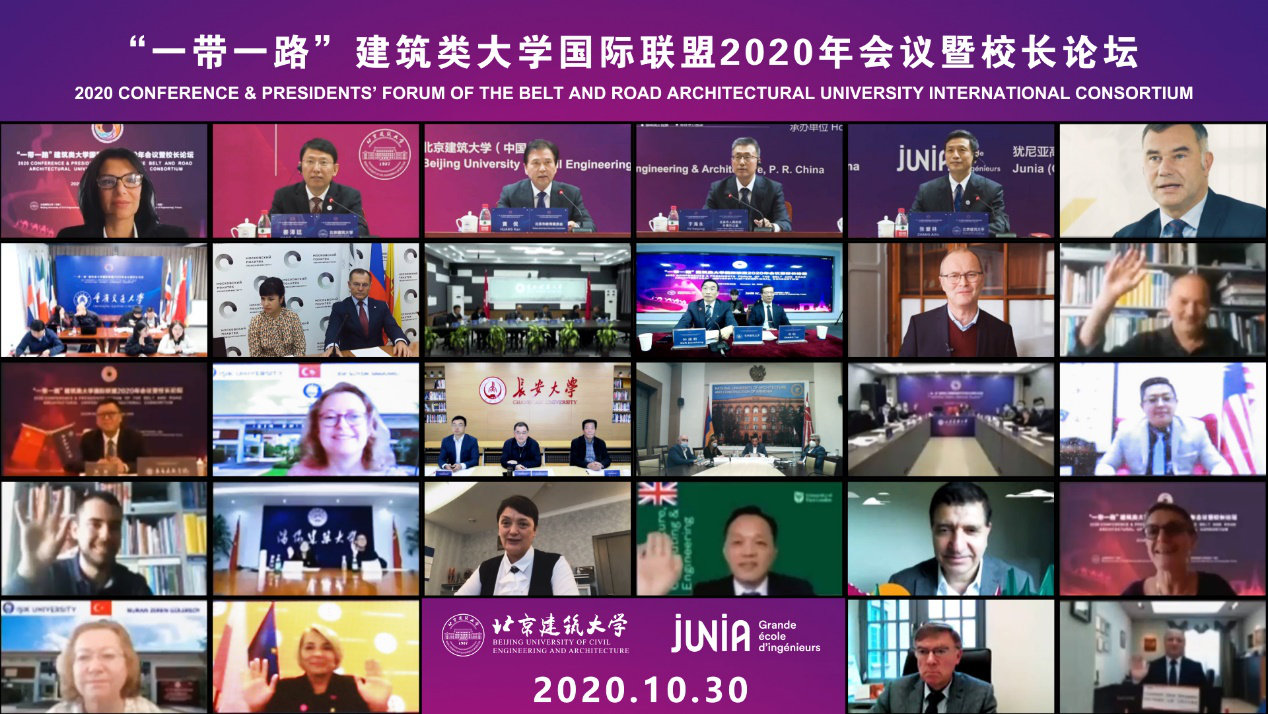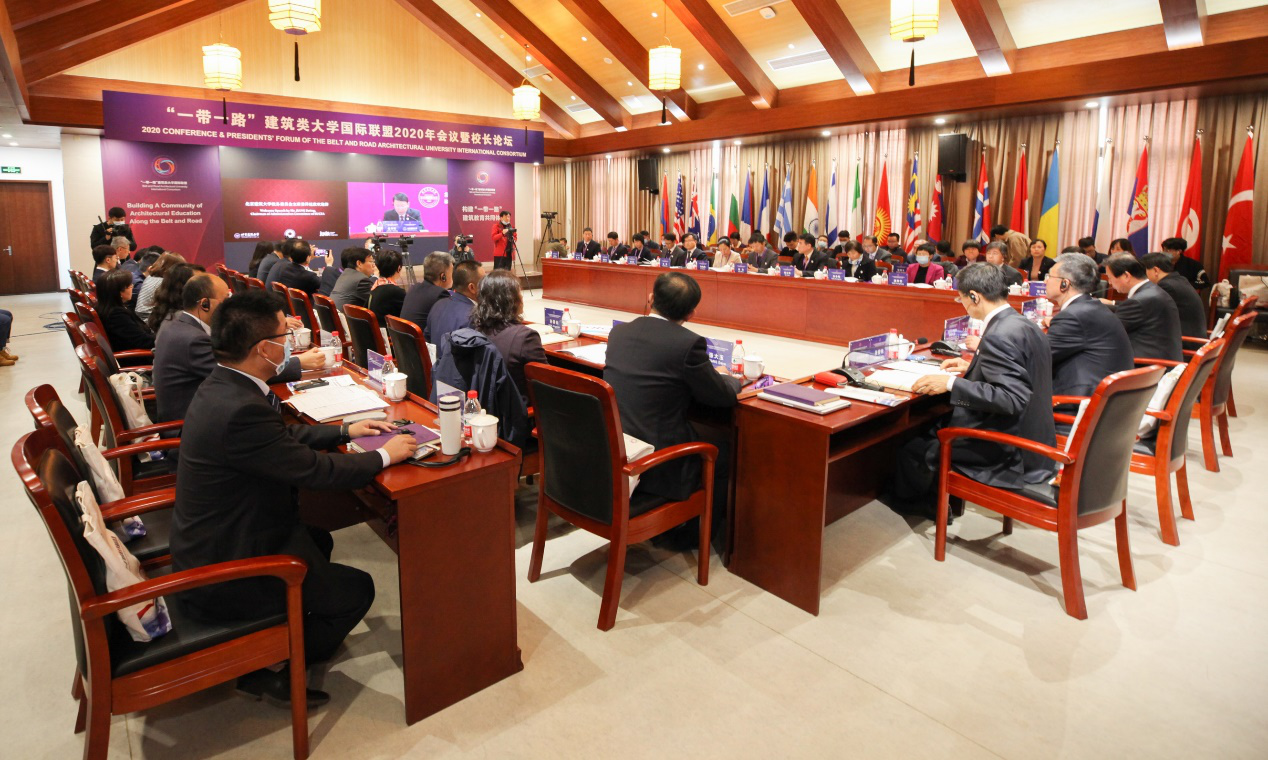
On
October 30, the 2020 Conference & Presidents' Forum of the Belt
and Road Architectural University International Consortium was held
through cloud services, which set up a bridge among the consortium
members. More than 150 architectural universities' presidents,
architectural experts, and scholars from 26 universities in 12
countries, including China, Britain, France, Russia, Poland, and
Armenia, had extensive discussions, both online and offline, about
creating a Belt and Road community of architectural education. They
discussed the cultivation of innovative talents, communication and
cooperation in the field of architectural engineering, and how to
cope with new opportunities and challenges in the future against the
backdrop of regular pandemic prevention and control worldwide, with
hopes of further boosting the exchanges and cooperation among
architectural universities in countries along the Belt and Road
routes.
The
Belt and Road Architectural University International Consortium was
initiated by Beijing University of Civil Engineering and Architecture
(BUCEA) in 2017. The consortium has continuously expanded its circle
of friends over recent years, with 7 new entrants this year, driving
the total membership to 64 entities in 27 countries. The consortium
actively promotes the application of new technologies in
architecture. To meet the needs for eco-environmental protection and
sustainable development along the Belt and Road, it promotes the
joint research and application of new technologies such as remote
sensing and big data and organizes the members to jointly apply for
international cooperation projects. BUCEA, leveraging its two
advantageous disciplines of architecture and civil engineering, is
also holding international summer sessions annually to tighten the
ties among universities from different countries.

At
the meeting, Jiang Zeting, Secretary of the CPC Committee of BUCEA,
proposed that the Consortium should keep its eyes on demands of the
time and truly exert the universities' positive role in pioneering
sci-tech progress and tackling global challenges. Meanwhile, the
Consortium members, upholding innovative concepts, should create more
open and inclusive talent cultivation mode, and join hands to
strengthen global cooperation so that they can brew new opportunities
amidst crisis and foster a global community of higher education in
architecture.
Zhang
Ailin, President of BUCEA, said that in 2021, the Consortium should
improve its operating mechanism, work harder on international
communication, and expand its international influence. It should
propel in-depth educational and scientific research cooperation among
the members, launch cooperative education in various forms, and
promote the sharing of quality educational resources. He called for
continued efforts to create prestigious brands of student design
contests and summer sessions and hold a successful 2021 conference &
presidents' forum. Besides, he urged the Consortium to start
formulating the five-year action plan for 2025 and preparing for
relevant international exchange events.
Yu Haiyong, a member of the Leading Party Members' Group and Deputy Director-general of Foreign Affairs Office of the People's Government of Beijing Municipality, Huang Kan, level-1 inspector of Beijing Municipal Education Commission, and Salvatore Castiglione, Vice President of the Hauts-de-France region attended the Conference and delivered speeches.


